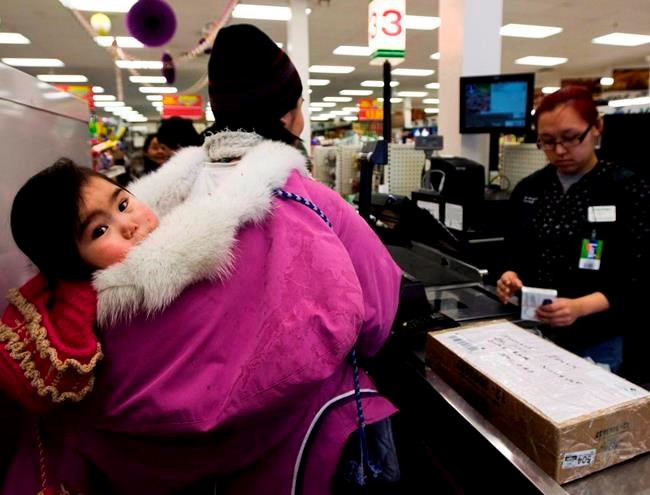OTTAWA — A national Inuit organization is calling for about $1.6 billion in federal funding over 15 years to set up a co-ordinatedschool food program in the North.Â
Inuit Tapiriit Kanatami released a report last week, developed through the Inuit-Crown Food Security Working Group, advocating for a breakfast and lunch program in 75 schools across Inuit Nunangat, or Inuit homeland in Canada. Inuit Nunangat encompasses 51 communities in the Northwest Territories, Nunavut, northern Quebec and northern Labrador, where the cost of living is high and food insecurity and poverty are prevalent.
"Ensuring that Inuit children and youth have what they need to eat and sustain themselves not only enhances their educational experience, it also ensures their mental wellness, their connection to Inuit culture and their overall security," said Kiana Foster, a senior policy adviser with Inuit Tapiriit Kanatami.Â
"By feeding our children and youth, we are ensuring that they grow up to be healthy adults. It's a true investment in our community and our people."
Inuit Tapiriit Kanatami said the program should include long-term funding in human resources and infrastructure, focus on healthy and locally sourced food options, be able to to adapt to regional and community needs, and be grounded in Inuit culture.Â
The report details projected costs of the program from 2023 to 2038, taking into account anticipated school enrolment and attendance rates, as well as the cost of food, labour, training, operations and infrastructure. It states infrastructure will cost $102.4 million over the first three years, which includes building new or retrofitting existing kitchens in schools, while operating costs will be roughly $1.55 billion over 15 years.Â
Foster said food programming in various stages is currently being offered in some schools in Inuit Nunangat but they are largely run by teachers and principals. Many rely on donations, which she said is not sustainable.Â
Jason Rochon helped run the school food bank and breakfast program at Joamie Ilinniarvik School in Iqaluit, where he worked as a student support worker.Â
"Kids were helping each other fill their backpacks and telling each other what to grab or if there were new items," he said. "It was really, really nice."
When schools in Iqaluit were closed due to the COVID-19 pandemic, Rochon said volunteers began packing paper bags with breakfast items that included milk, cereal, cheese, yogurt and fruit, and distributed them to residents throughout the city. He said they would sometimes serve up to 600 people a day.Â
"We definitely see the need," he said. "Any chance we get to feed children, we should make sure that we do that."
Rochon said he was consulted about Inuit Tapiriit Kanatami's proposed school food program and supports it.
He said finding adequate funding for food programming can be challenging as well as accessing fresh fruits, vegetables and dairy in the North where costs are high. He added it can be hard for school staff to find the time to run food programs alongside addressing academic and other student needs.Â
"Children who are well fed and have lots of rest, they learn, and you know you can't teach a child if they're hungry," he said.
"We live in a country where children should have access to food. No kid should be going hungry and we all have a part to play."
In Nunavik in northern Quebec, the regional board of health and social services said breakfast programs have been run in all schools for many years. In the past two years, there has been a focus on developing lunch and snack programs.Â
This year, the board said it provided more than $600,000 to support school food programs and has seen an increase in requests for hot lunch programs in the upcoming school year. It said it aims to secure long-term, stable funding for school food programs.
A 2007-08 Inuit Health Survey found 69 per cent of Inuit households in Nunavut were food insecure, 46 per cent in Nunatsiavut in northern Labrador, and 43 per cent in the Inuvialuit Settlement Region in N. W. T and Yukon.Â
A 2014 survey on Inuit food security in Nunatsiavut found more than 59 per cent of households were food insecure, while a 2017 survey on Inuit health in Nunavik found up to 78 per cent of respondents 16 years and older were food insecure.Â
This report by The Canadian Press was first published March 28, 2023.
— By Emily Blake in Yellowknife
This story was produced with the financial assistance of the Meta and Canadian Press News Fellowship.
The Canadian Press




